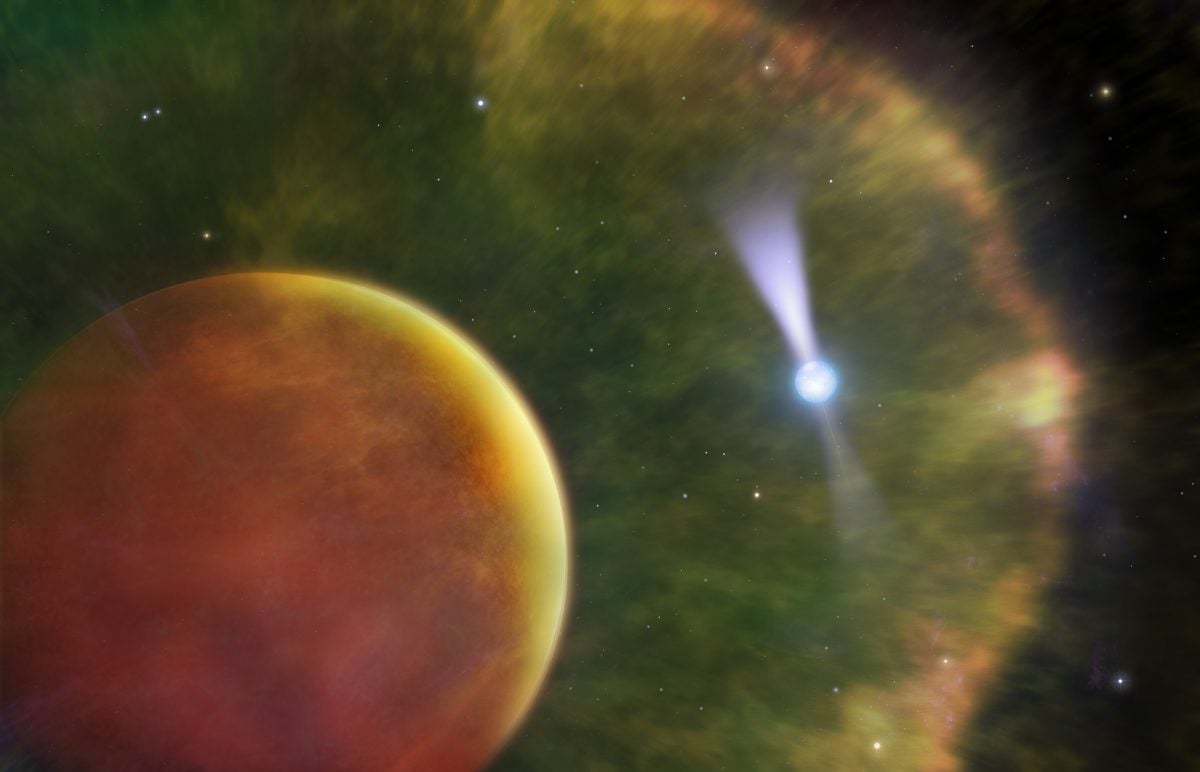Imagine being able to see a flea on the surface of Pluto. That’s a good way to describe what the Arecibo Observatory in Puerto Rico helped a group of Canadian researchers do.
The team, led by Robert Main of the University of Toronto, was able to observe unprecedented details of a pulsar 6,500 light years from Earth. Astronomers study pulsars for a variety of reasons. For example, pulsars have been used to verify gravitational waves. In fact, the pulsar system that led to the first indirect measurement of gravitational waves was also discovered at Arecibo, and led to the Nobel Prize in Physics in 1993. Pulsars may also hold clues to understanding the mechanisms behind colliding black holes.
The team’s new findings are published this week online in the journal Nature.
The Arecibo Observatory, a National Science Foundation facility, is managed through a collaboration between UCF, Universidad Metropolitana in San Juan, and Yang Enterprises Inc. in Oviedo, FL. Arecibo’s instrumentation gives hundreds of international scientists the opportunity to make observations and conduct research not easily done through other means.
“Arecibo continues to be one of the most important telescopes to our research, due to its incredible sensitivity,” Main says.
Main, a Ph.D. astronomy student in the Department of Astronomy & Astrophysics and the Dunlap Institute for Astronomy & Astrophysics at the University of Toronto, says Arecibo and the pulsar’s location gave the team a unique opportunity.
The observation was made possible by the rare geometry and characteristics of a stellar binary system in which a brown dwarf star and a pulsating neutron star, or pulsar, orbit each other. Gas, or plasma, from the brown dwarf acts like a lens, focusing radiation from the emission sites, Main described in a press release.
“We are essentially looking at the pulsar through a naturally occurring magnifying glass, which allows us to see the two regions separately,” Main says. “The biggest advantage to Arecibo is its incredible sensitivity compared to other radio telescopes since it has much more collecting area. Finding the effect of highly magnified pulses was only possible in Arecibo, since we already had the sensitivity to detect every pulse from this pulsar.”
Read more about the scientific findings.
Main is already working on furthering his findings with new observation times at Arecibo.




